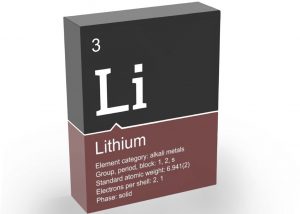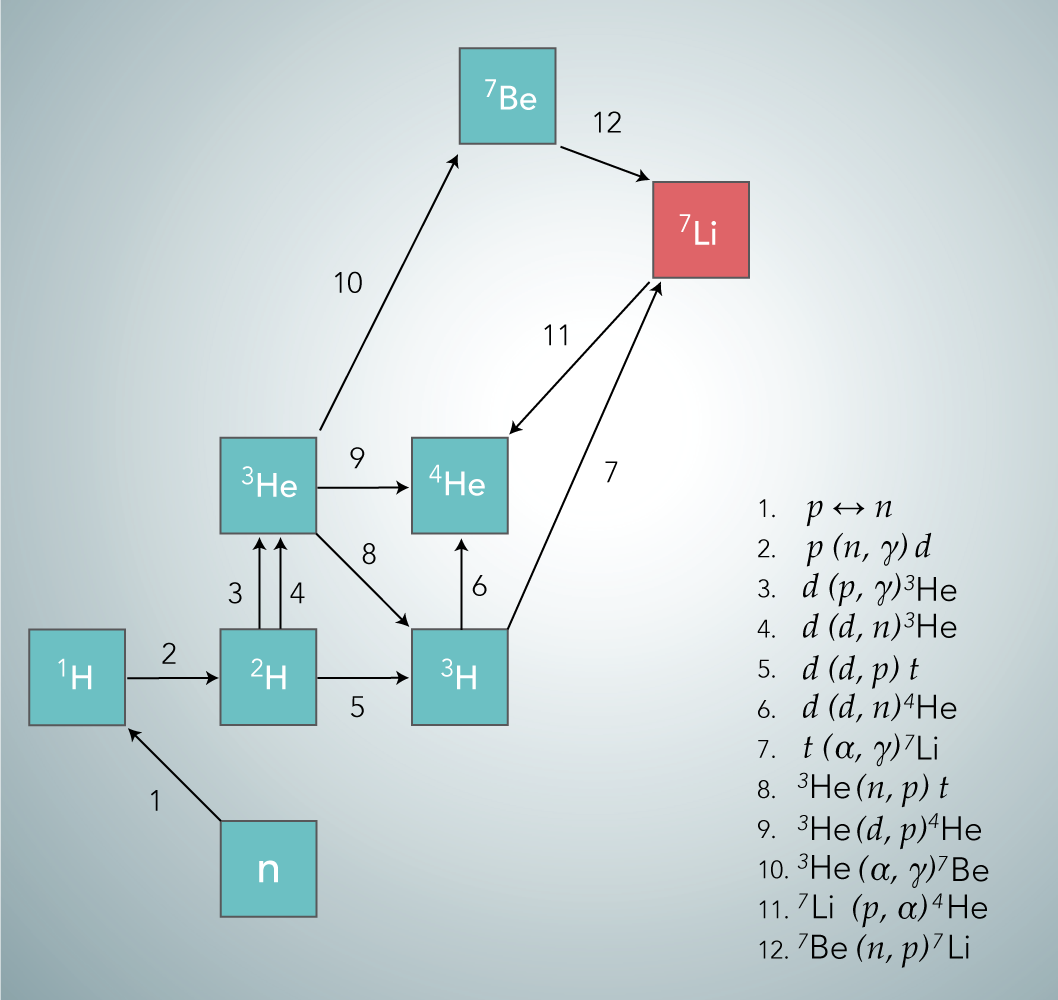 About ten seconds after the Big Bang, the temperature of the Universe cooled down to a few billion kelvin and the synthesis of light nuclei –deuterium, helium, beryllium, lithium– started. (The synthesis of heavier nuclei would only start after the Universe became old enough to host stars).
About ten seconds after the Big Bang, the temperature of the Universe cooled down to a few billion kelvin and the synthesis of light nuclei –deuterium, helium, beryllium, lithium– started. (The synthesis of heavier nuclei would only start after the Universe became old enough to host stars).
Starting from our knowledge of nuclear physics, in the last sixty years, cosmologists have been able to reconstruct completely the web of reactions that took place at this stage of the Universe. The success of this reconstruction depends on the agreement with the observations of the theory of the abundance of helium and deuterium, and it makes the primordial nucleosynthesis theory a pillar of modern Cosmology.

So far, so good. No: the primordial nucleosynthesis theory predicts an abundance of lithium-7 about 3 times bigger than the one deduced by the observation of the atmosphere of ancient stars. It is indeed true that this measure could be altered by phenomena of astrophysical evolution following the primordial nucleosynthesis. However, it is also true that several astrophysical mechanisms leading to lithium reduction were proposed, yet none of them completely solved the problem. For this reason, Goudelis, Pospelov and Prader [1] rethought the primordial nucleosynthesis scenario in light of the possible existence of elementary particles beyond the Standard Model.
Lithium-7 is a result of the beryllium-7 decay, in turn originated by the fusion of two helium isotopes. In the model proposed by the authors, the beryllium-7 production, and hence the lithium-7 abundance, is reduced as a result of the existence of a light particle, electrically neutral, interacting directly with proton and neutron. To make sure this change does not alter the prediction of the standard theory for the abundances of deuterium and helium, the new particle must have a mass comprised between about 2 and 20 MeV, and lifetime between 100 and 10,000 seconds.
The authors speculate that this particle might also be some kind of axion, interacting weakly with the d quark, to be looked for with future experiments involving high luminosity colliders. (Danilo Babusci)
[1] – A. Goudelis, M. Pospelov, J. Pradler, Light Particle Solution to the Cosmic Lithium Problem, Phys. Rev. Lett. 116 211303 (2016) arXiv:1510.08858
 INFN-LNF Laboratori Nazionali di Frascati
INFN-LNF Laboratori Nazionali di Frascati